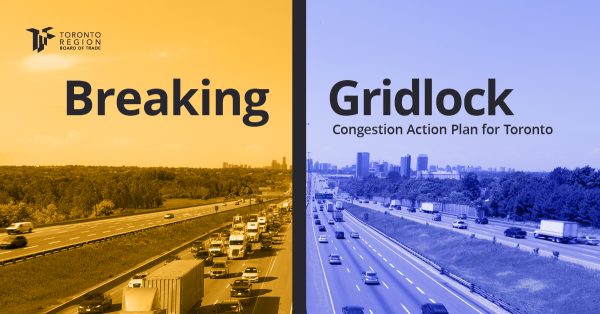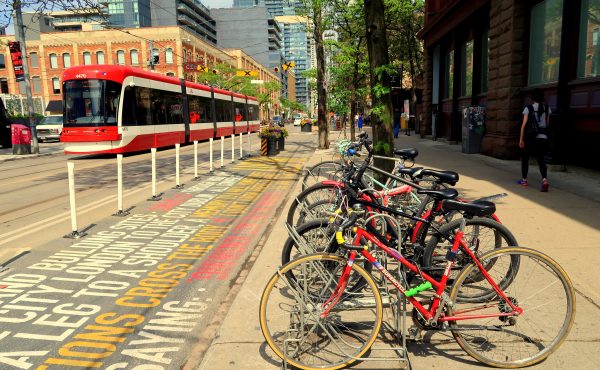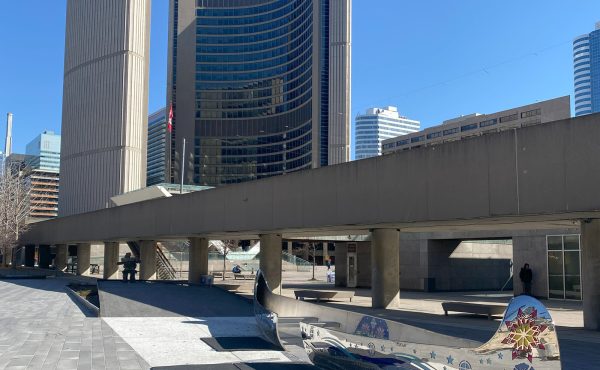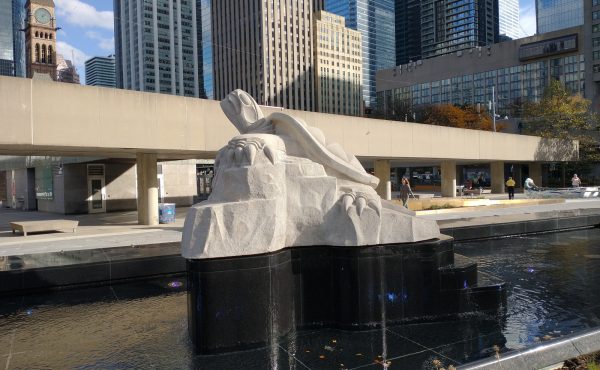Toronto doesn’t have a congestion problem — it has a car problem. Yet, the Toronto Region Board of Trade’s Breaking Gridlock report offers more of the same outdated thinking that got us into this mess in the first place. Rather than addressing the root causes of congestion, the plan doubles down on car-first policies that make our streets less efficient, less equitable, and less livable.
For decades, cities worldwide have learned that expanding road capacity or prioritizing vehicle movement doesn’t alleviate congestion — it makes it worse. It’s called induced demand: the more space you make for cars, the more cars show up. Instead of tackling this reality, Breaking Gridlock suggests we just enforce car dominance more aggressively.
The Wrong Solutions for the Wrong Problem
The report’s five main recommendations sound reasonable at first glance — until you dig deeper.
- Reduce Lane Closures – Prioritizing car movement over long-term improvements, like transit expansion and cycling infrastructure, is a short-sighted mistake.
- Enforce the Rules of the Road – Sure, but doubling down on enforcement without addressing the fundamental issues of car dependency just penalizes drivers for being stuck in a broken system.
- Unclog Major Arteries – Moving bike lanes and curbside uses elsewhere doesn’t “unclog” anything — it just shifts people-friendly spaces back in favor of cars.
- Clear Traffic Bottlenecks – Minor operational tweaks won’t solve systemic congestion caused by an overreliance on single-occupancy vehicles.
- Implement Accountability Measures – A “congestion czar” is meaningless if they’re only measuring how fast cars move instead of how effectively people get around.
The Glaring Omissions: Vision Zero, TransformTO, and Accessibility
One of the most shocking aspects of the Breaking Gridlock report is its complete disregard for two of Toronto’s most critical policies: Vision Zero and TransformTO.
Vision Zero, the city’s official road safety plan, prioritizes reducing traffic-related fatalities and serious injuries, especially for vulnerable road users like pedestrians and cyclists. The Breaking Gridlock plan makes no mention of this, despite advocating for policies that would further entrench car dominance at the expense of safety.
Likewise, TransformTO, the city’s climate action strategy, aims to reduce greenhouse gas emissions and increase sustainable mobility. It explicitly calls for more walking, biking, and transit use — yet the Breaking Gridlock report actively undermines these goals by focusing solely on car flow and road expansion. Ignoring climate accountability in 2025 is not just negligent; it’s reckless policymaking.
Equally concerning is the complete absence of Toronto’s Multi-Year Accessibility Plan (MYAP). Under the Accessibility for Ontarians with Disabilities Act (AODA), the city has a legal obligation to remove barriers and ensure accessible mobility options for all residents, including those with disabilities. The Breaking Gridlock report fails to acknowledge these commitments, instead focusing entirely on the movement of private vehicles. Any serious congestion strategy must prioritize inclusive design, ensuring that all residents — regardless of ability — have equitable access to safe, efficient, and barrier-free transportation.
A Real Plan to Fix Congestion
If we actually want to address congestion, we need to stop treating it as a traffic problem and start treating it as a mobility problem. That means:
- Investing in Transit – Frequent, reliable, and affordable public transit makes driving unnecessary for many trips. Toronto already has a successful example in the King Street Transit Priority Corridor, where transit ridership soared and travel times improved after prioritizing streetcars over cars. Expanding dedicated streetcar lanes and integrating GO Transit with TTC and multiple local transit partners across the GTHA will make transit a real alternative to driving.
- Congestion Pricing – Cities like London, Stockholm and recently NYC have proven that road pricing reduces gridlock and funds better transit. In fact, research from the Could Congestion Pricing Unlock a Better Toronto? report shows how this could be a game-changer for our city, providing much-needed revenue for transit improvements and incentivizing more sustainable transportation choices.
- Better Street Design – Complete streets that prioritize transit, cycling, and walking move more people, more efficiently, than car-choked roads ever will. CaféTO and ActiveTO have already demonstrated how reallocating road space can create vibrant, people-focused environments while maintaining business activity and easing congestion. Instead of removing these programs, the city should be expanding them.
- Emphasizing Walkability and Micro-Mobility – Encouraging walking and cycling as viable transportation options will reduce car dependency and free up road space for those who need it. Cities like Paris and Barcelona have implemented pedestrian-first planning, leading to reduced traffic and improved quality of life. Toronto should follow suit by expanding pedestrian-only zones, maintaining protected bike lanes, and improving infrastructure for micro-mobility options like Bike ShareTO
Instead of rehashing failed strategies, let’s focus on solutions that actually work. Toronto’s future doesn’t lie in forcing more cars through the same crowded streets — it lies in giving people real choices about how they move through the city. The Board of Trade’s report is not a real congestion action plan — it’s a car congestion plan. We need to demand better.
Lanrick Bennett, Toronto’s first Bicycle Mayor and Urbanist-in-Residence at UofT’s School of Cities, is a passionate advocate for sustainable urban mobility, active transportation, and community-driven city building, with extensive experience in leadership roles across urban design, placemaking, and climate action.




